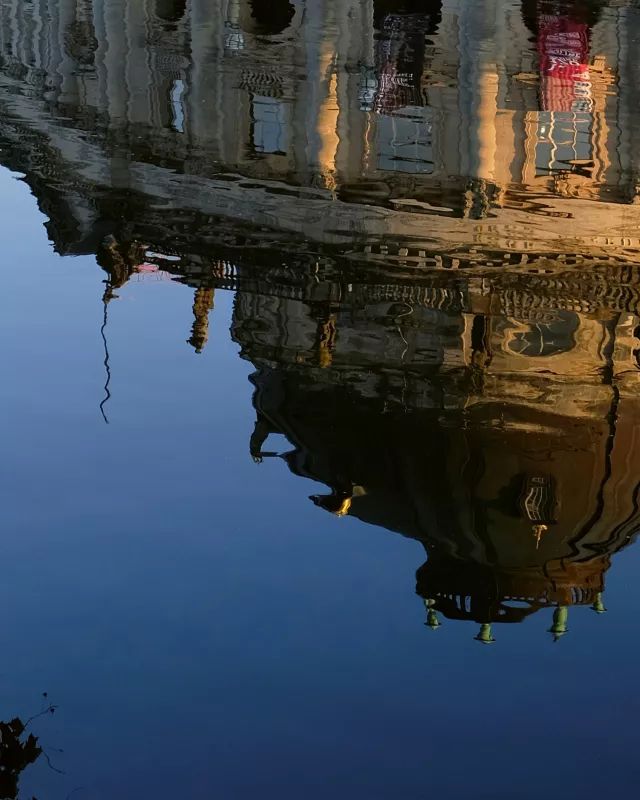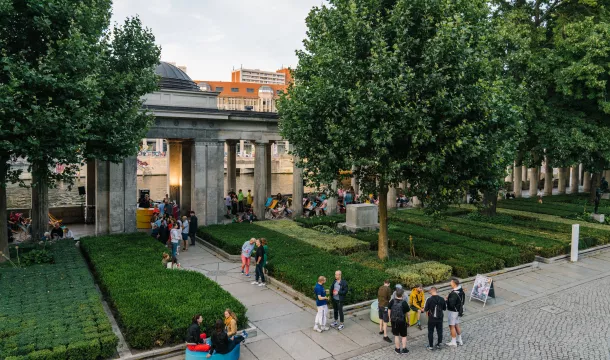200 years of Museum Island Berlin: facts and figures about the world cultural heritage site
Berlin, May 2025 Five museums, a World Heritage title and millions of visitors every year: Berlin's Museum Island is unique in the German and international museum landscape. Art and culture lovers from all over the world flock to the capital because of it. The foundation stone for today's internationally renowned Museum Island was laid 200 years ago, in July 1825. Berlin is taking this special anniversary as an opportunity to celebrate the five world heritage buildings with numerous events and special exhibitions over the next five years.
- All about the island summer on the occasion of 200 years of Museum Island: island feeling, special treasures, favourite pieces, events and special exhibitions
- The programme of the island summer 2025
- Berlin's most beautiful summer meeting place: The Kolonnaden-Bar on Museum Island opens until 31 August 2025, Wednesdays to Sundays from 12 noon and 2 to 10 pm
A selection of interesting facts from 200 years of Museum Island is summarised in this fact sheet.
Past and present of the Museum Island
- The foundation stone of the Altes Museum was laid on 9 July 1825. The master builder was the famous urban planner and architect Karl Friedrich Schinkel. It opened its doors five years later - as Berlin's first museum building and the nucleus of Museum Island.
- Five museums, five eras: Museum Island includes the Old Museum (1830), the New Museum (1859), the Old National Gallery (1871), the Bode Museum (1904) and the Pergamon Museum (1930). The museum collections not only illustrate many thousands of years of human history. Its five museums also bear witness to 100 years of museum architecture.
- The newest building on Museum Island is the James-Simon-Galerie, which opened in 2019. Designed by British star architect David Chipperfield, the building is not only a modern visitor centre, it also regularly hosts first-class exhibitions.
- Museum Island has had its own underground station since July 2021. The U5 station is adorned with a midnight blue ceiling with 6,662 points of light, reminiscent of a starry sky.
The museums and their collections
- Berlin's Museum Island has been a UNESCO World Heritage Site since 1999. One of the criteria cited by the commission is that the unique ensemble illustrates the development of modern museum building over the course of more than a century.
- 2,573,641 people visited the five buildings on Museum Island in 2023 - that's more than half of the total of 4.4 million visitors to the National Museums in Berlin.
- Probably the most famous object on Museum Island is in the Neues Museum: the world-famous bust of Nefertiti. Hundreds of thousands of people flock to the Neues Museum every year to marvel at it.
- The largest and heaviest object on Museum Island is in the Pergamon Museum: the Market Gate of Miletus from the Roman imperial period weighs 750 tonnes in total, just the original parts alone.
- From 2027, the Pergamon Altar will be open to the public again after extensive restoration. In the meantime, visitors can visit the exhibition "PERGAMON. Masterpieces of the ancient metropolis and 360° panorama by Yadegar Asisi", visitors can travel back to the year 129 AD. Developed in collaboration with archaeologists, the panorama brings the Hellenic metropolis to life.
Bathhouse, drinking hall and film set: Surprising facts about the Museum Island
- The Welper Bathhouse was located on Museum Island from around 1805 to 1865. The private bathhouse was named after the Berlin city physicist Dr Georg Adolph Welper, the founder of modern bathing in Berlin.
- Historic drinking hall: The Kolonnaden Bar was already a popular meeting place on Museum Island during the Wilhelminian era. Opened in July 1883, it had to close 54 years later at the instigation of the then Director General. In recent years, the concept has experienced a revival, and this summer the Kolonnaden Bar is once again inviting visitors to enjoy moderated talks, DJ sets and cool drinks from June to August.
- The Museum Island is not only a regular venue for film festivals, it is also a film star in its own right. Its museums serve as spectacular backdrops for films, documentaries and series such as the Korean hit series "Queen of Tears" or the Netflix hit "The Queen's Gambit".
- The ideal ticket for all culture fans for the anniversary: the Berlin WelcomeCard Museum Island allows free admission to all museums on the island - and free travel by bus and train in Berlin.




